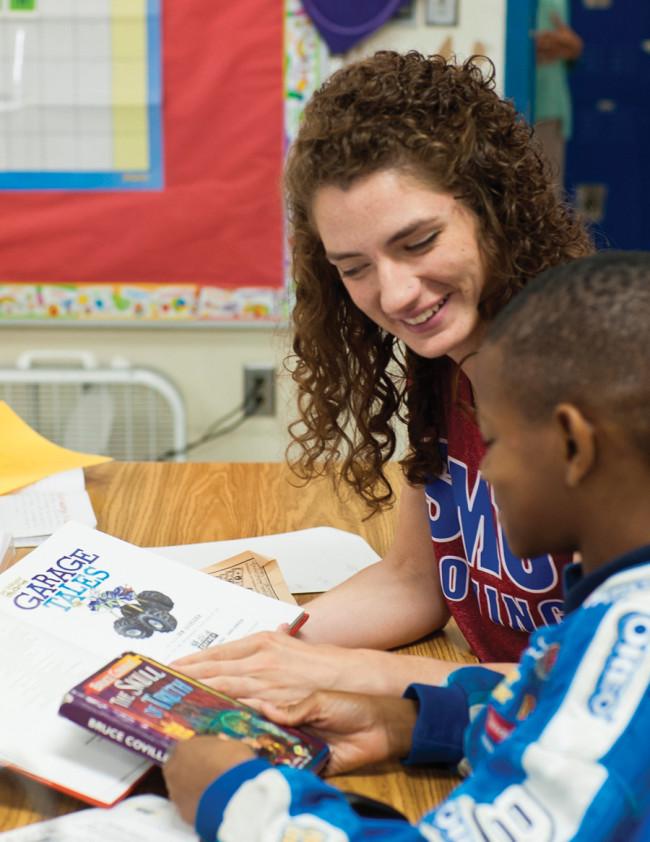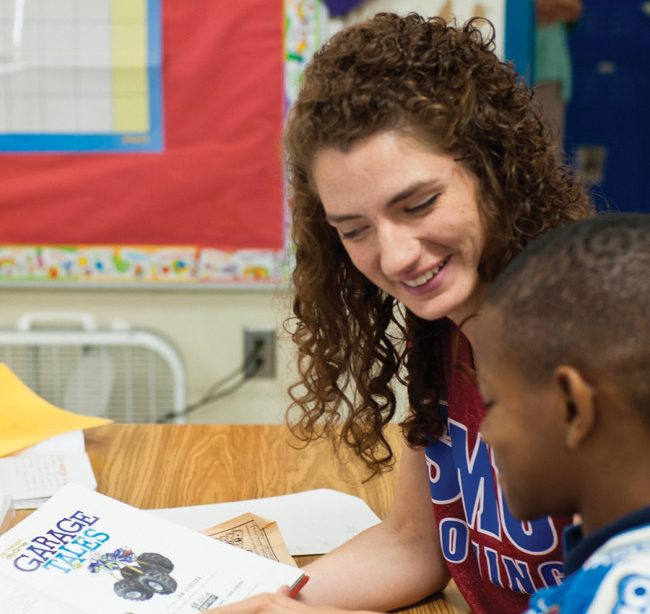
“Dear Sarah,
I miss you so much, I hope you do good on your test please come back to Booktown because I miss you.
To: Sarah
From: Aden”
This note is from Aden, a third grade girl who struggles with school, to Sarah, an SMU student who tutored Aden at the non-profit Readers to Leaders (R2L) during fall 2013.
R2L, developed in 2011, is a program that works with kids who are below reading proficiency from five West Dallas elementary schools. The non-profit specifically concentrates on the area bound by downtown Dallas to the east, the Trinity River to the north, Loop 12 to the west and I-30 to the south.
At the beginning of the 2013-2014 academic year, R2L, a member of the School Zone, needed volunteers to continue supporting the West Dallas students.
“One of the things that really would help them was SMU students,” Center on Communities and Education Communications Director Erin Crosby said. “This was our opportunity for us to support them in another way.”
In 2009 The School Zone, a partnership between SMU, 10 West Dallas public schools, 20 non-profit organizations, DISD, DCCCD, and business, was developed by the West Dallas Education Task Force. SMU’s Center on Communities and Education (CCE) takes the lead in the initiative.
The CCE hired nine work-study students to work at R2L. The Catholic Center, who had volunteers with R2L before, recruited and organized transportation for volunteers. Students from the Embrey Human Right’s program and Wellness classes volunteered as part of their service learning commitment.
The nonprofit currently services 240 children and has about 80 volunteers, with about 25-30 volunteers being SMU students. Three former SMU students are part of the staff.
SMU students give a commitment of a semester and a once a week commitment so children can constantly see a familiar face. The influx of SMU volunteers has brought the ratio between tutors and students up.
“Before we had SMU students involved, we might have a volunteer working with two or three or four students in a group,” R2L Director Norma Nelson said.
“With this wonderful influx of SMU students, we’ve been able to do a lot more of one-on-one tutoring which has been really great give the kids more of an opportunity to move forward when they have the attention just for them.”
The average student at R2L is a tier three student, which means they are functioning below the 20 percentile in a national reading test. Students are four times less likely to graduate high school.
“It’s very hard to get them caught up once they fall behind,” Nelson said. “ They definitely are coming from at risk situations and they don’t have the ability to pay for high cost tutoring.”
According to the CCE, the 11.5 square mile area’s poverty and unemployment rates are more than double that of the city of Dallas. Less than 50 percent of the population has a high school diploma and about two percent have a college education, according to the 2000 census.
“You see parents who really want their children to have a good educations, but don’t necessarily have the opportunity to because of their work schedule,” SMU volunteer Genesis Reed said. “It’s been a interesting and great learning experience.”
R2L tests the students to see at which level they are reading, and then, with the tutoring, the students are able to gain one and a half months of skills for every one month of tutoring. Last year, 42 percent of students met their grade level proficiency or within two months of their proficiency.
“[SMU students] are able to get a great quality education and they’re able to pass that off to the kids,” Nelson said. “They are able to talk about going to college and how important getting an education is.”
Volunteers work with students during school by reading with a student for 30 minutes during the school day away from other students or in an afterschool program. During the afterschool program the child reads to the volunteer from one of the 5,000 books in the R2L library and the volunteer in turn reads to child from a higher level book.
The program does other hands-on activities such as the reading challenge that encourages students to read outside of the classroom and tutoring sessions.
R2L also attempts to work parents’ concerns in with their program by setting up students with extra tutoring or during homework time.
Antonio, who was tutored by SMU sophomore David Palumdo, struggled with math and reading. When Palumbo first started working with him, he could do about five multiplication problems in a minute during the homework time.
Antonio improved to about 20 problems with a minute.
“He went from being behind to being one of the more proficiency ones in his class,” Palumdo said. Palumdo worked with the R2L after seeing a pamphlet around campus and then begin tutoring three to four times a week last semester.
Reed, political science and human rights major, had a similar experience with a student she was tutoring at C.F. Carr Elementary School. She had been working with a boy for about two or three weeks. She walked into the room and saw he was reading a book he hadn’t been able to read by himself before.
“He was like, ‘Look, Miss, Miss I can read this without you this time,’” Reed said. “That was really cool. When you help them, they catch on and remember and they keep it with them. It’s been like that with every child I’ve worked with.”









